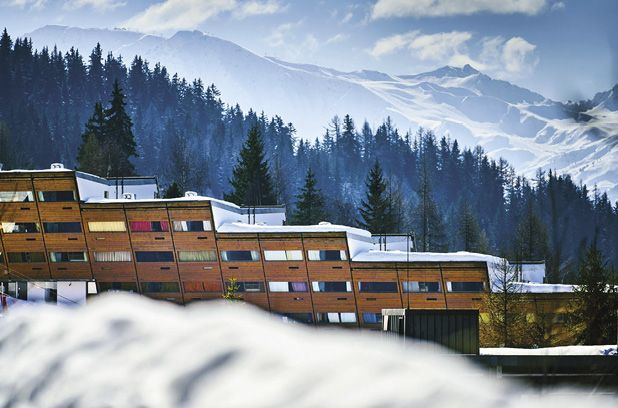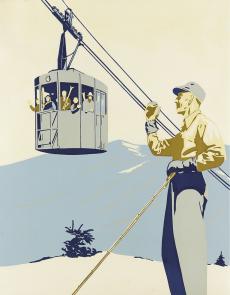SKIING HISTORY
Editor Seth Masia
Managing Editor Greg Ditrinco
Consulting Editor Cindy Hirschfeld
Art Director Edna Baker
Editorial Board
Seth Masia, Chairman
John Allen, Andy Bigford, John Caldwell, Jeremy Davis, Kirby Gilbert, Paul Hooge, Jeff Leich, Ron LeMaster, Bob Soden, Ingrid Wicken
Founding Editors
Morten Lund, Glenn Parkinson
To preserve skiing history and to increase awareness of the sport’s heritage
ISHA Founder
Mason Beekley, 1927–2001
ISHA Board of Directors
Rick Moulton, Chairman
Seth Masia, President
Wini Jones, Vice President
Jeff Blumenfeld, Vice President
John McMurtry, Vice President
Bob Soden (Canada), Treasurer
Einar Sunde, Secretary
Richard Allen, Skip Beitzel, Michael Calderone, Dick Cutler, Ken Hugessen (Canada), David Ingemie, Joe Jay Jalbert, Henri Rivers, Charles Sanders, Christof Thöny (Austria), Ivan Wagner (Switzerland)
Presidential Circle
Christin Cooper, Billy Kidd, Jean-Claude Killy, Bode Miller, Doug Pfeiffer, Penny Pitou, Nancy Greene Raine
Executive Director
Janet White
janet@skiinghistory.org
Membership Services
Laurie Glover
(802) 375-1105
laurie@skiinghistory.org
Corporate Sponsorships
Peter Kirkpatrick
(541) 944-3095
peterk10950@gmail.com
Bimonthly journal and official publication of the International Skiing History Association (ISHA)
Partners: U.S. Ski and Snowboard Hall of Fame | Canadian Ski Museum and Hall of Fame
Alf Engen Ski Museum | North American Snowsports Journalists Association | Swiss Academic Ski Club
Skiing History (USPS No. 16-201, ISSN: 23293659) is published bimonthly by the International Skiing History Association, P.O. Box 1064, Manchester Center, VT 05255.
Periodicals postage paid at Manchester Center, VT and at additional mailing offices. Postmaster: Send address changes to ISHA, P.O. Box 1064, Manchester Center, VT 05255
ISHA is a 501(c)(3) public charity. EIN: 06-1347398
Written permission from the editor is required to reproduce, in any manner, the contents of Skiing History, either in full or in part.
Short Turns: Bash for Cash, Les Arcs honored

Aspen Highlands’ bruising—and short-lived—no-rules race.
By Jay Cowan
Aspen Highlands founder Whip Jones had a knack for publicity stunts. His 1960s Bash for Cash, anything-goes citizen downhill also had a knack for mayhem and injuries. But the race did result in a popular poster of that era.
From its inception in a valley dominated by Aspen Skiing Corporation properties, Aspen Highlands always strived to stand out. Owner and founder Whipple Van Ness Jones, a maverick by nature, centered his area on pushing the boundaries on entertaining customers and garnering publicity.
After the area opened in 1958, Stein Eriksen, Highlands’ first ski school director, did flips—an audacious trick for that era—at the bottom of the mountain every day. A dozen years later, ski patrollers began jumping off the patrol shack roof, pulling toboggans. Eriksen’s eventual replacement, Fred Iselin, performed Reuel christies down the mountain while reading his own book. So it was probably inevitable that something as brash and fundamentally American as the Bash for Cash would be created here. The event featured racers charging en masse, like lemmings, down a cliffy run for a pot of money at the finish.
Jones blamed the event on the original head of the ski patrol. “There’s no question that Charlie Bolte was the biggest character I ever knew at Highlands,” Jones later explained. “On the job he had a fondness for explosives. And after work he was quite a prominent member of the customers at the bar. He also came up with the idea, maybe at the bar, for our famous race the Bash for Cash.”
Early versions of this madness—with a Le Mans-style–start, no gates and few rules—ran on Lower Stein, near the area’s base. In the early 1960s it was moved much nearer to the top of the mountain. It plunged down the Olympic run face and cut across to the Wall, a short, steep, punishing mogul field, with a run-out finish to the $100 cash prize. The winner was the first one down without falling.
“We started it each week by blowing up a case of dynamite. That was a hell of a charge,” recalled Jones. Indeed. And almost as insane as the fact that they ran the race every week.
Not surprisingly, it occasionally produced chaos like that in the mid-1960’s poster (see left), part of a sequence of three images taken right after the start on the Olympic face by the late Tony Gauba of Aspen. Highlands instructor and patrolman Paul Dudley is one of those in the photo, and one of the few who didn’t get hurt.
“I’m the one still standing in the poster,” he laughs. “Then the s*** hit the fan and people started colliding.” He remembers, “Twenty or less of us lined up side-by-side at the start and right away the run narrowed to about five feet wide with powder on either side.”
He and his friend Doug Rowley had practiced for the event and decided Dudley would try to shoot that gap, and Rowley would follow a little behind everyone and hope to safely pick his way through in case Dudley didn’t make it.
“When the chaos started, I skied off to my left into the powder and stopped and then the screaming started. Everyone was hurt. Broken bones, concussions, cuts. Some of them skied down. They hauled others off, and they found one guy later halfway down the mountain just walking in a daze,” Dudley says.
A story in the Aspen Times about that particular race, published in the February 28, 1964, issue, led with this: “In the worst accident of the Aspen skiing season, two men were hospitalized following a collision during the Aspen Highlands first Bash for Cash race of the winter last Sunday, Feb. 23.”
Jones, who witnessed the carnage, said no one was sure what happened. “Two of them fell or collided,” the story quoted him as saying, then adding its own summary: “The other contestants either fell trying to avoid the first two or ran into them.”
Attending physicians at the Aspen Valley Hospital were Robert Oden and Robert Barnard. Racer Myron Leafblad of Wisconsin had “the worst spiral fracture I’ve ever seen,” Oden said. Highlands instructor Mike Riddell “had his upper jaw broken in two places and his upper front teeth torn away,” the Aspen Times reported.
An angry letter from the doctors to the newspaper was followed by an editorial that noted that “in the excitment of competition,” sports participants “must be protected from themselves,” and that Bash for Cash failed miserably on that front. “Racers and race organizers are lucky that more were not hurt, or that no one died,” the editorial read.
The Forest Service, which owns most of the Aspen Highlands property, along with the ski area’s insurance company, are said to have caused the event’s demise the following season. The Aspen Skiing Company purchased Highlands in 1993. But a faint whiff of mayhem and cordite still lingers over the mountain, the locals’ favorite among ASC’s properties. 
Les Arcs Named “One of the Most Significant Works of Postwar Architecture”

to fade into its mountain backdrop. Agence Merci
Les Arcs, in Savoie, France, is known for its avant-garde architecture, conspicuously different from the traditional Alpine designs prominent at many European resorts. The New York Times agrees on the resort’s distinction, naming Les Arcs No. 14 in “The 25 Most Significant Works of Postwar Architecture,” by Kurt Soller and Michael Snyder, published in August.
One of the first mega-resorts, Les Arcs consists of five interconnected base areas, each named for its elevation in meters. All but Arc 1950, the last of the areas constructed, were built in a modernistic style. The Times story notes the innovative work of French architect (and skier) Charlotte Perriand, a leading figure of 20th-century design. She took on the project in the late 1960s, at age 65.
“Perriand approached the construction of her ambitious Les Arcs resort as an opportunity to introduce the masses to what she described as the ‘possibility of self-transcendence’ offered by mountain landscapes,” the story reported. Perriand’s portion of the project consisted of “two clusters of hotels and apartments set into the mountain slope with views up to the pastures above.”
With a tight construction schedule, Perriand incorporated prefabrication techniques lifted from shipbuilding. “To assemble a structure that could accommodate 18,000 beds in the span of just seven months, she used mold-formed polyester to make easily reproducible kitchens and bathrooms. Carefully planned setbacks in the facade transformed the building itself into a slope, providing each of its long, narrow rooms with expansive views.”
The Cascade building (above), at Arc 1600, is noted as an example of her inspiration to have the hotel disappear into the mountain environment. “The ski chalet doesn’t rank that brilliantly in terms of sustainability or honorable usage of materials, particularly nowadays, but that modular approach to building—the way she integrated into the landscape and the woodiness of the prefabricated construction—is amazing, as are the furnishings inside,” the story reported.
Table of Contents

Corporate Sponsors
ISHA deeply appreciates your generous support!
WORLD CHAMPIONSHIP ($3,000 AND UP)
Gorsuch
Polartec
Sport Obermeyer
Warren and Laurie Miller
CHAMPIONSHIP ($2,000)
Fairbank Group: Bromley, Cranmore, Jiminy Peak
Hickory & Tweed Ski Shop
Rossignol
Snowsports Merchandising Corp.
WORLD CUP ($1,000)
Aspen Skiing Company
Berkshire East Mountain Resort/Catamount Mountain Resort
Bogner
Boyne Resorts
Dale of Norway
Darn Tough Vermont
Dynastar | Lange | Look
Gordini USA Inc. | Kombi LTD
HEAD Wintersports
Intuition Sports, Inc.
Mammoth Mountain
Marker-Volkl USA
National Ski Areas Association
Outdoor Retailer
Ski Area Management
Ski Country Sports
Sports Specialists, Ltd.
Sun Valley Resort
Vintage Ski World
World Cup Supply
GOLD ($700)
Larson's Ski & Sport
Race Place | BEAST Tuning Tools
The Ski Company (Rochester, NY)
Thule
SILVER ($500)
Alta Ski Area
Boden Architecture PLLC
Dalbello Sports
Deer Valley
Ecosign Mountain Resort Planners
Fera International
Holiday Valley
Hotronic USA, Inc. | Wintersteiger
MasterFit Enterprises
McWhorter Driscoll, LLC
Metropolitan New York Ski Council
Mt. Bachelor
New Jersey Ski & Snowboard Council
Russell Mace Vacation Homes
Schoeller Textile USA
Scott Sports
Seirus Innovations
SeniorsSkiing.com
Ski Utah
Steamboat Ski & Resort Corporation
Sundance Mountain Resort
Swiss Academic Ski Club
Tecnica Group USA
Timberline
Trapp Family Lodge
Western Winter Sports Reps Association
World Pro Ski Tour
Yellowstone Club


